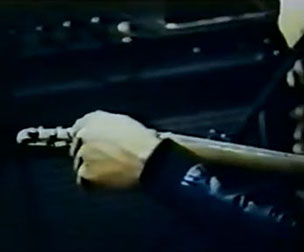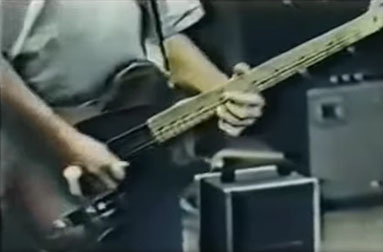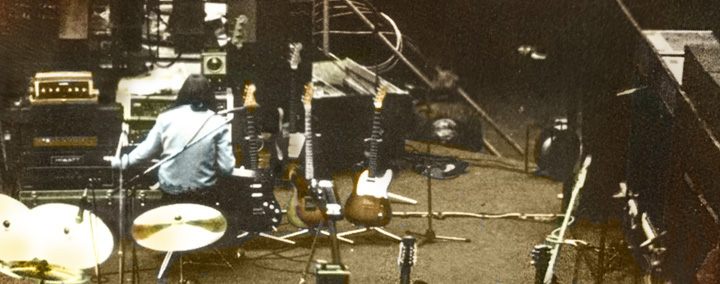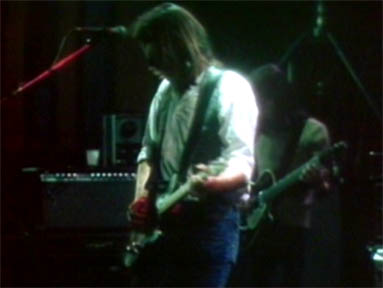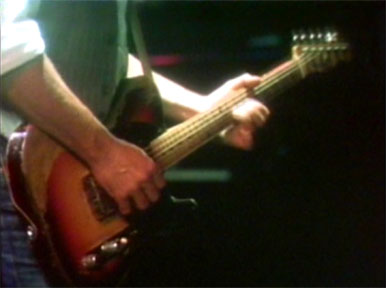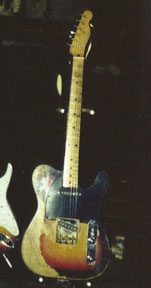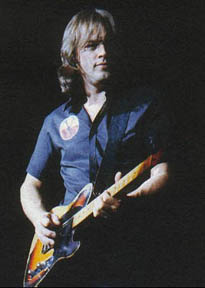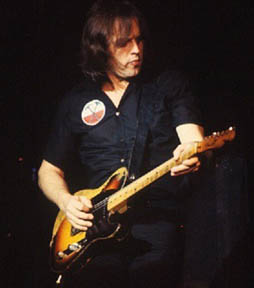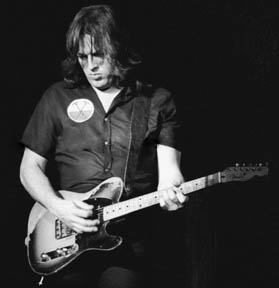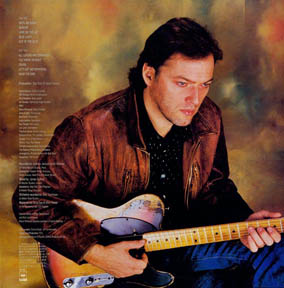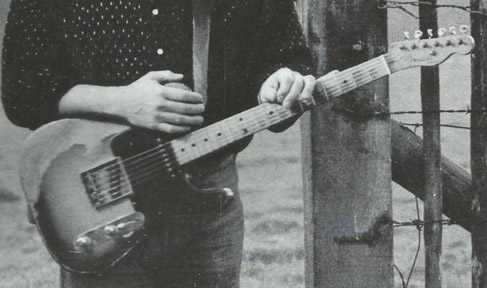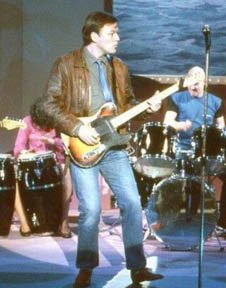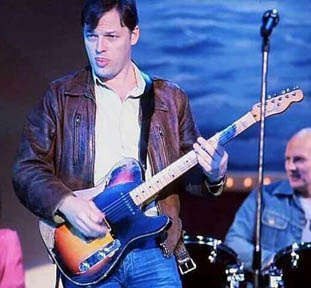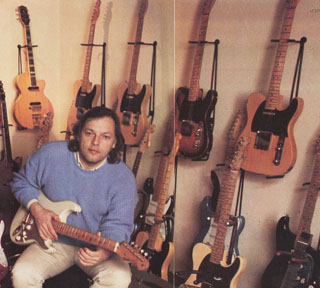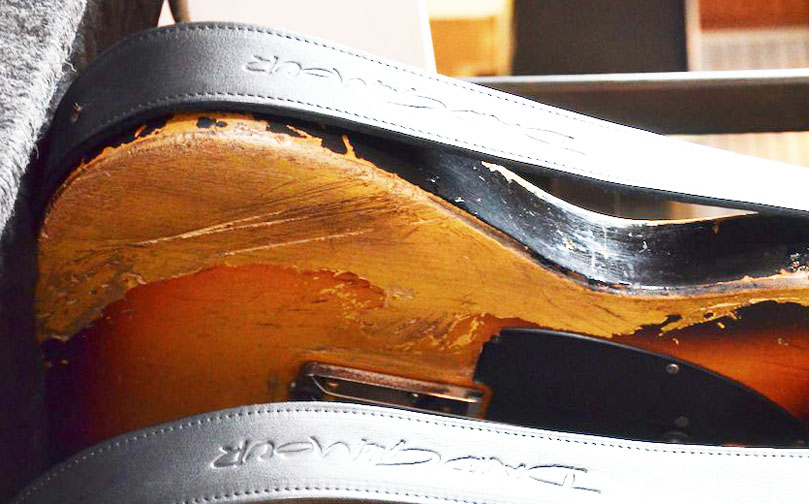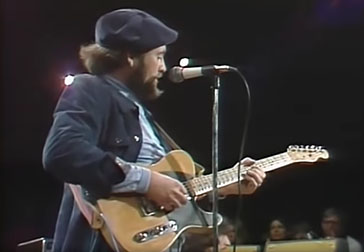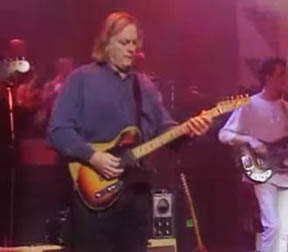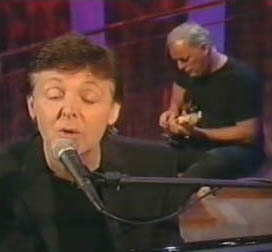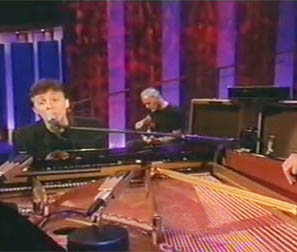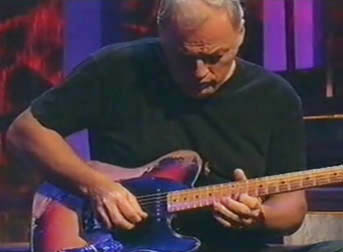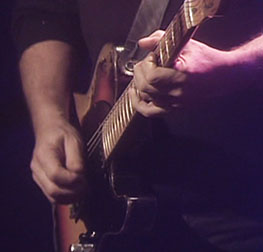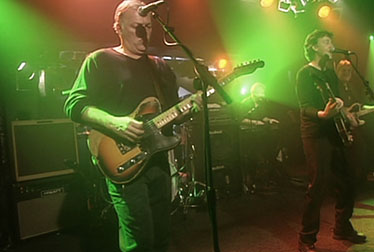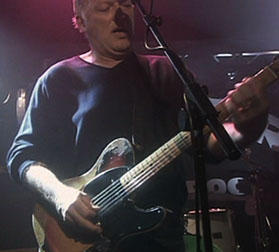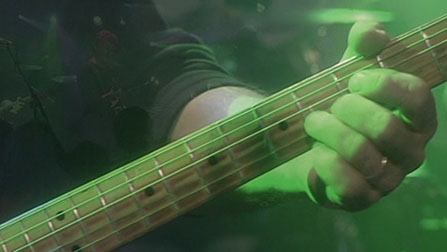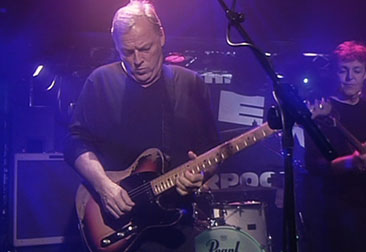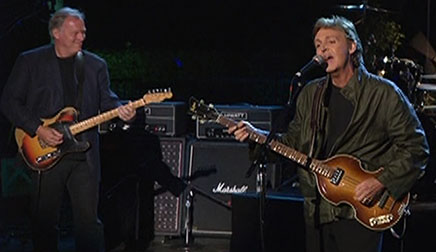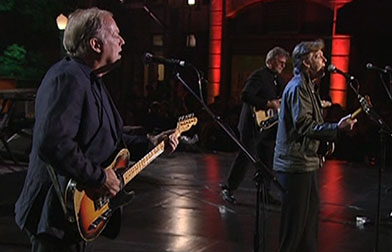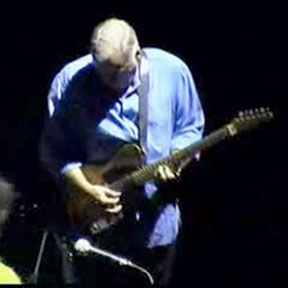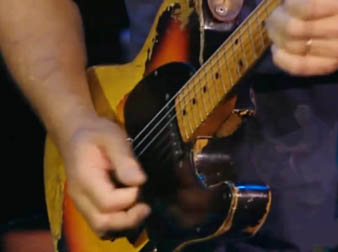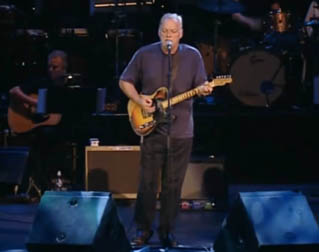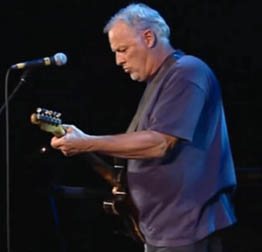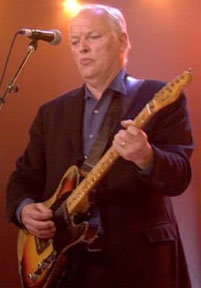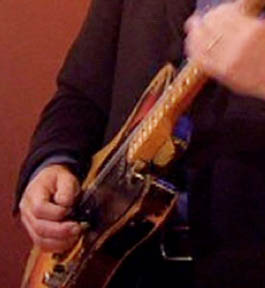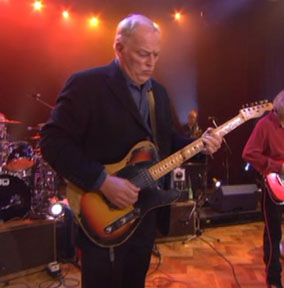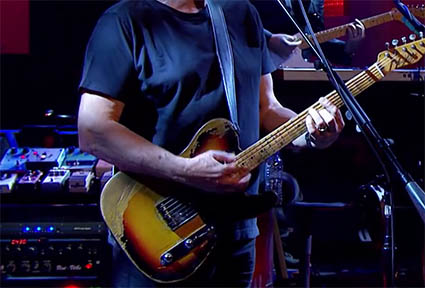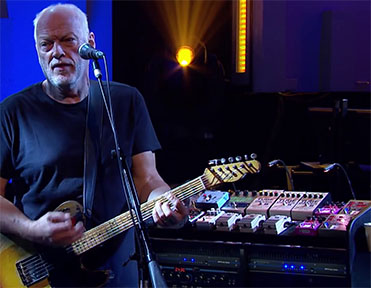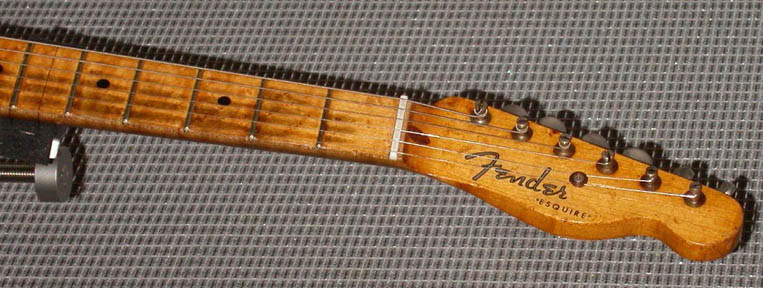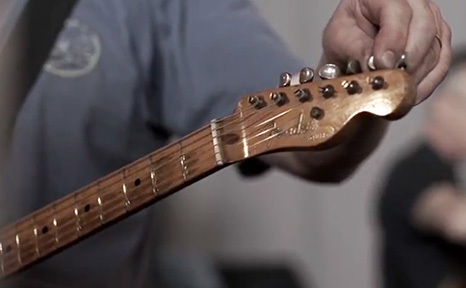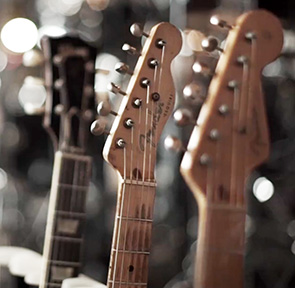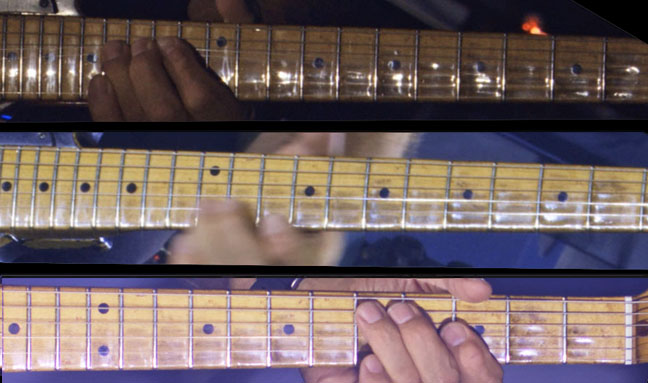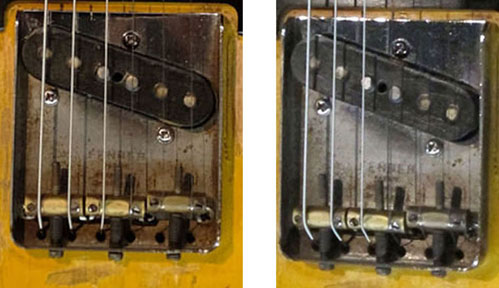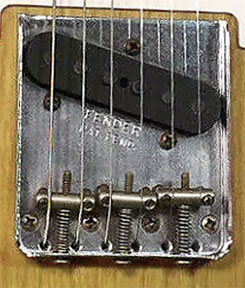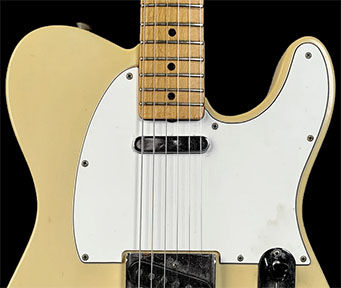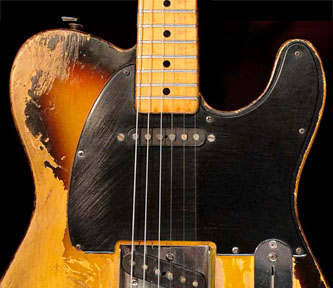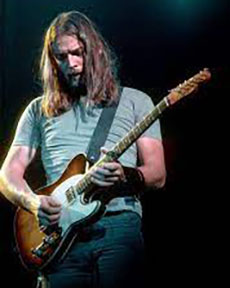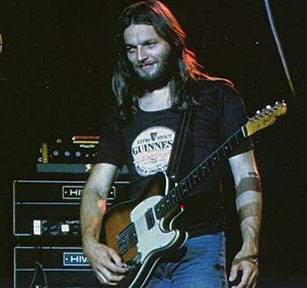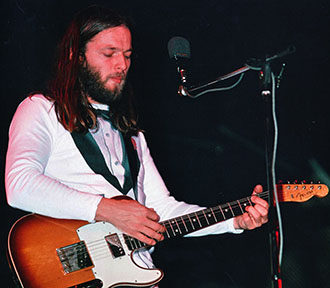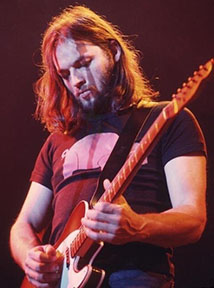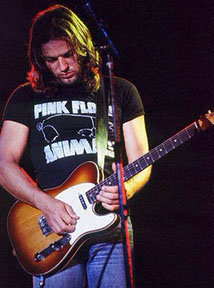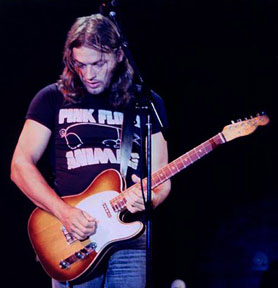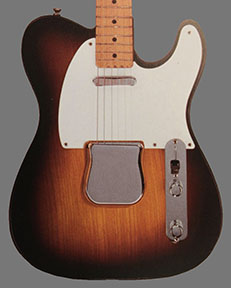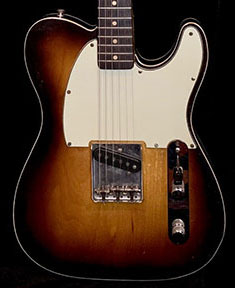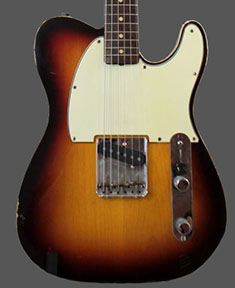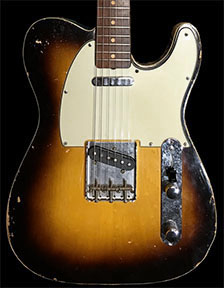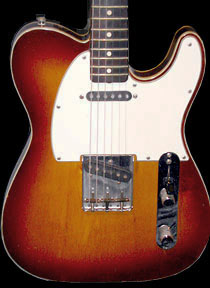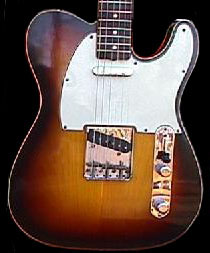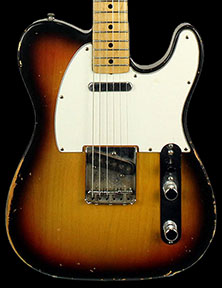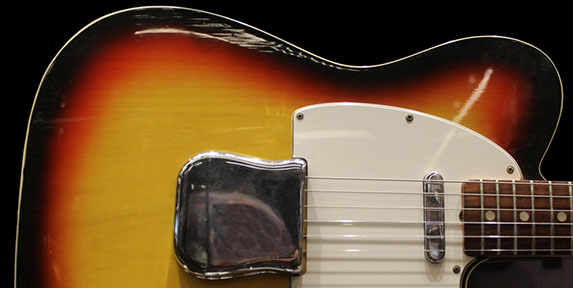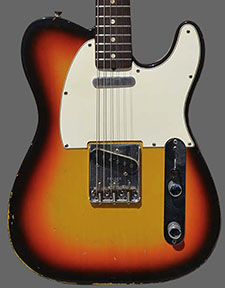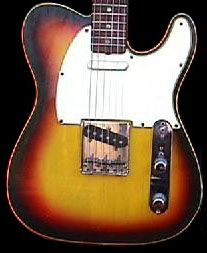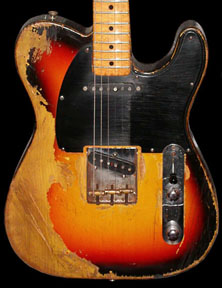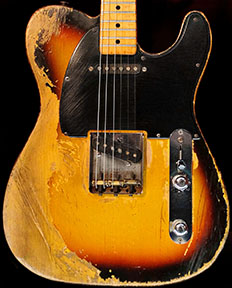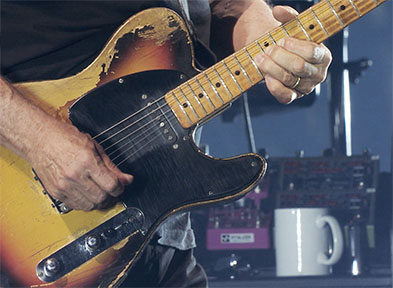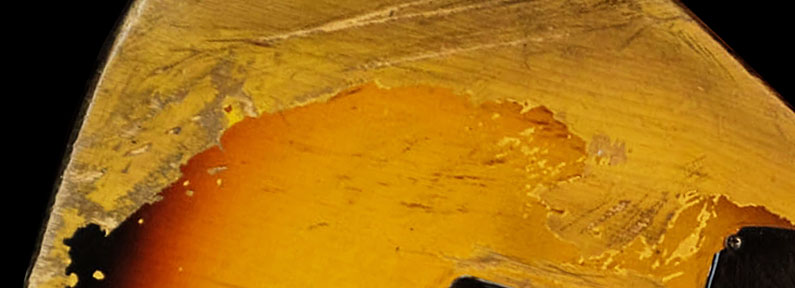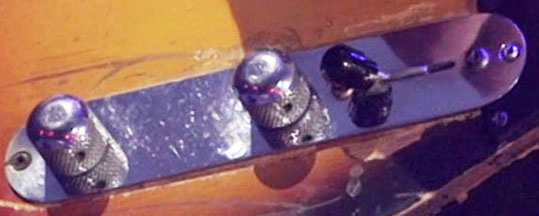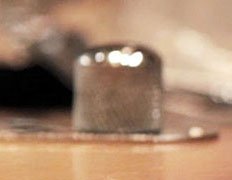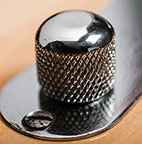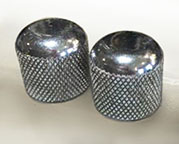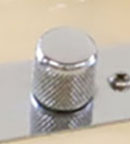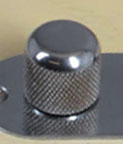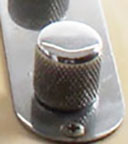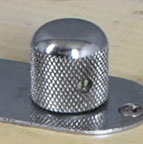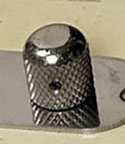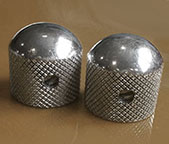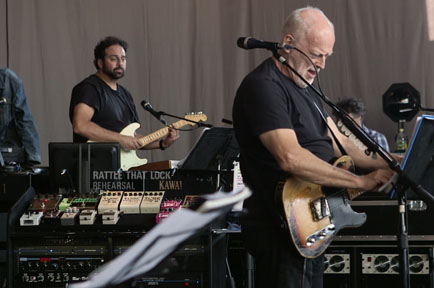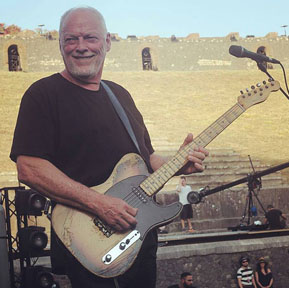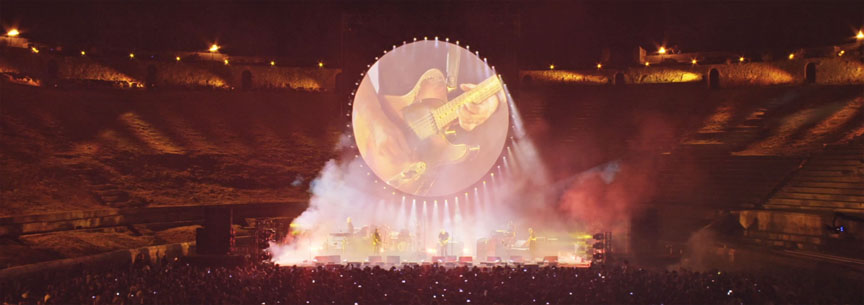NOTE: This website is frequently updated. Last update September 2024
For Photo and Screen Shot Gallery Continue to NEXT PAGE
For the Fender Workmate Replica CLICK HERE
It’s my favorite, really. It’s a Fender, well it says it’s an Esquire, but it’s got two pickups so I guess it’s a Telecaster, but it has no serial number, which is odd. - David Gilmour Youtube 2024
THE WORKMATE ESQUIRE - As most David Gilmour fans know, David has always been a Telecaster player, and started off playing one in his first band and when he joined Pink Floyd in 1967. The Workmate is probably his most well known Tele, and the guitar that sparked my interest in Teles. It originated as an Esquire, but with a neck pickup added like a Telecaster. Since 1977 David has used the Workmate for each of his solo albums and several Pink Floyd albums. It can be heard on songs like Young Lust, No Way, Blue Light, Rattle That Lock, and perhaps the most famous Workmate song, Run Like Hell. It is one of David's favorite guitars and he even had Fender Custom Shop make a Masterbuilt replica for him.
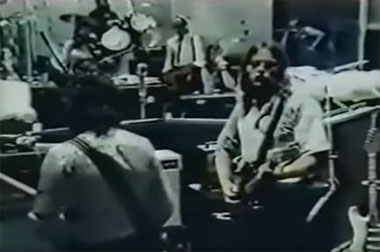
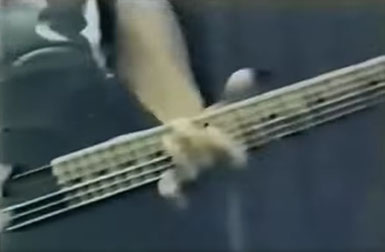
Gilmour playing the Workmate on Paul McCartney's Rockestra in 1978
Gilmour during the Animals tour rehearsals in London, January 1977.
To his right are the Black Strat, the Workmate, and a 1959 Custom TelecasterThe first time I remember seeing this guitar was in a promo video for David's first album in 1978 and the Paul McCartney Rockestra documentary from 1979. Rockestra was an instrumental on Paul's Back to the Egg album, and David was one of several guitarists who made up the "rockestra", recorded in Abbey Road Studios, October 1978. The next time I saw it was in photos from Pink Floyd's The Wall shows in 1980, then on the back cover of David's About Face album in 1984. I had just started playing guitar and that photo made me want a Tele.
No Way guitar solo played on the Workmate - from the 1978 CBS promo video
Run Like Hell played on the Workmate - demo excerpt
Young Lust played on the Workmate - excerpts from the 7" Italian single version
Rattle That Lock solo played on the Workmate - live in June 2016
The Workmate is often said to be a 1955 Fender Esquire, and it does have a '50s Esquire neck, but it has the wrong pickguard for the period, the wrong bridge for the period, the wrong sunburst finish for the period, and the wrong two-pickup wiring for the period. It appears to be a 'parts caster', assembled with parts from 1955 through the 1970s. Below is a deep dive into everything known about this guitar, and a little bit of Esquire/Telecaster history.
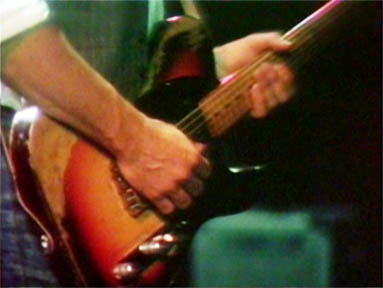
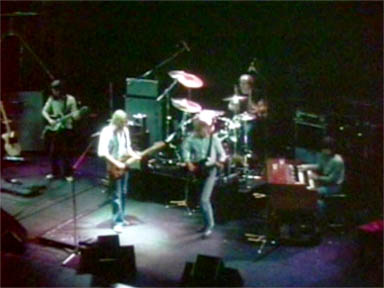
Gilmour playing No Way with the Workmate at The Roxy, London, May 1978 - CBS promo video for his first album.
The Esquire was the first solid body electric guitar Leo Fender ever sold back in 1950, and one of the first mass produced electric guitars. Leo and George Fullerton came up with the unique, simple, yet functional design. It had a bolt-on neck, a single pickup, with a tone and volume control. Esquires had a three position tone circuit, but wired differently, and sounded different than a Tele circuit. Position 1 bypassed the tone control for a brighter sound. Position 2 was wired to both the tone and volume pots. Position 3 had a tone circuit that rolled off the highs to create a fixed bass tone. The idea being that it would allow a guitarist to play bass on the Esquire. The two-pickup Broadcaster/Telecaster version came out soon after in 1950, but single pickup Esquires were still sold until 1969. There were aslo a small numbr of two-pickup Esquires made.
This is my old Fender Esquire – horribly abused by a previous owner – which I have loved for nearly 40 years and nicknamed the Workmate - David Gilmour , the Guardian 2015
It was an extremely popular guitar for Rock and Roll, and most of the big guitar players from the 1960s and 1970s started out playing them, incuding Jimmy Page, Jeff Beck, Pete Townshend, Keith Richards, Syd Barrett, and David Gilmour.
The Workmate from The Wall recording sessions, and Gilmour playing it in The Wall live concerts (1980-81).
David only used it for Run Like Hell in the concerts, but it was also used for other songs on the studio album, like Young Lust.The Workmate was seen in the album cover photos for About Face in 1984
(left, middle) David playing the Workmate with his band in 1984 and (right) Part of
Gilmour's collection of Telecasters, including the Workmate, from 1986The Workmate is a guitar that has fascinated a lot of us Gilmour-gear heads for many years. Its beat up, road worn appearance just looked really damn cool. That rough and worn look has inspired many fans to make their own relic'd Workmate replicas. I remember seeing people making replicas of this with faked body damage long before the whole relic guitar industry fad was even a thing. The unique body damage - saw marks, scratches, and dents that resembled a Black & Decker Workmate workbench - was already there when David acquired the guitar, thus it was nicknamed it the the Workmate.
The old Tele that I call The Workmate started out, before I had it, as an Esquire. It had had a neck pickup added before I had it which I later changed for a Strat neck pick-up. The bridge pick-up is the one that was on it when I got it, not sure quite what it is and I confess that I don’t know what the difference between a Broadcaster’s and a Tele’s wiring is - David Gilmour 2018
There can be endless speculation as to how this damage was done, and why. I think it was probably a previous owners failed attempt to strip and refinish the guitar, abandoned after realizing there was no way to fix the mess that had been made. The saw marks on the upper curve of the body may have been an attemp at making a beveled contour there, like on a Stratocaster.
The Workmate Esquire body damage
David bought it around 1975-76 from Seymour Duncan. Duncan was working as a guitar tech in London at the time for the Fender Soundhouse where he repaired and modified guitars, as well as made custom wound guitar pickups for many British guitar legends. He assembled Jeff Beck's "Tele-Gib" around this time, which was used on Beck's Blow by Blow album. It was made from a butchered 1959 Telecaster and humbucker pickups from '59 Gibson Flying V that Duncan rewound. In exchange, Beck gave him his original Yardbirds Fender Esquire that he no longer used, which Duncan still owns. He went on to found the Seymour Duncan pickup company in 1976.
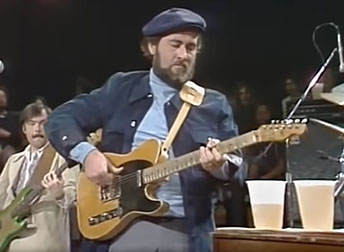
Roy Buchanan playing his 1953 Telecaster
David asked Seymour for a Tele that sounded like Roy Buchanan's "Nancy" Tele. Roy was an American blues musician known for playing Telecasters, and Nancy was a 1953 Tele he was most associated with. Duncan had known Roy since he was thirteen, and had even played Nancy a few times with him. Supposedly Nancy had a dead bridge pickup (a short somewhere in the coil) that gave no Ohm reading. It still worked and passed current, but it had very little low end and the top of the high end (the ice pick sound) was reduced, so it had a brighter upper mid range. Seymour put together a beat up Esquire for David that had a similar bright tone and custom wound a neck pickup for it. He does not remember much about the guitar now, so there is almost no information on its origin.
David got it from Seymour Duncan in the early ’70s in this state. David just really likes it as an instrument and is not concerned with its look. It is interesting that there are wood saw marks across the body, leading us to refer to it as The Workmate. - Phil Taylor
I went to see a guitar player called Roy Buchanon, who I was quite a big fan of, at the Marquee. I knew a guy who worked in the Sound City music shop in London (ed-it was actually Fender Soundhouse), and I asked him if he could find me an old Tele which would be very like Roy Buchanon’s, and this is what he found me. I think this one is probably from about ’76? - David Gilmour, Youtube 2024
Even though the Workmate has an Esquire neck label, it is essentially a Telecaster, and it became David's main Tele. He was first seen using it for Pink Floyd tour rehearsals in Janaury 1977, but it was not used on the tour. It was used in recording sessions for Pink Floyd's The Wall album (1978-79) and for each of David's solo albums. It was also used in recording sessions for Paul McCartney's Back to the Egg (1978) and Run Devil Run (1999) albums. David has played it live many times, including The Wall concerts (1980-81), with his About Face band (1984), with Tom Jones at the Amnesty Internationl 30th Anniversary concert (1991), at the Cavern Club with Paul McCartney (1999), with McCartney on the Parkinson show (1999), with McCartney at the PETA concert (1999), with the Soft Boys at the Royal Festival Hall (2001), the Tribute to Leiber & Stoller at the Hammersmith Apollo (2001), with Jools Holland and Mica Paris (2001), the Scotty Moore Elvis Tribute (2005), and David's Rattle That Lock tour (2015-2016).
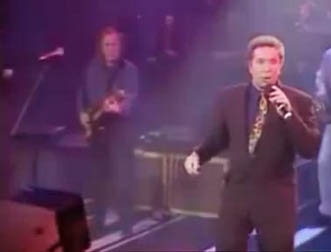
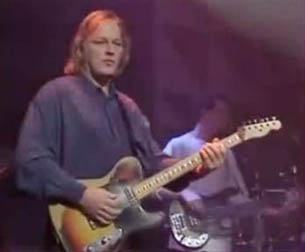
Gilmour performing with Tom Jones for the Amnesty International 30th Anniversary concert in 1991
Gilmour performing with Paul McCartney on the Parkinson show in 1999
Gilmour performing at the Cavern Club with Paul McCartney in 1999. He used the Workmate for the whole concert.
Gilmour performing at the PETA concert with Paul McCartney in 1999
(left) Gilmour with the Soft Boys at the Royal Festival Hall, London 2001
(right) Gilmour performing with Jools Holland and Mica Paris in 2001Gilmour performing Don't at the Tribute to Leiber & Stoller in 2001
Gilmour performing Don't in the Scotty Moore Elvis Tribute in 2005
Gilmour performing on the Later with Jules Holland show in 2015
__________________________________________________________
HOW DAVID USES THE WORKMATE - David typically plays the Workmate through Fender Tweed amps, but he has also played it through Hiwatts and combos of both Hiwatt and Fender Bassman amps. A big part of the sound is the compressor and Tube Driver he uses with it. When performing live, he nearly always uses a comp running into a BK Butler Tube Driver with a very light drive setting, or heavier drive setting for the high gain solos like in Fat Old Sun, Rattle That Lock and Today. He also uses a light delay. In the early days he used it with high gain disortion from a Big Muff(or possibly a Fuzz Face), particularly on the song No Way from the live CBS promo version in 1978.
_________________________________________________________
STRINGS -I do not think David has ever mentioned his Telecaste string gauges, but the Fitch/Mahon Comfortably Numb History of The Wall book lists David's Tele string gauges from The Wall period.
Telecaster string gauges from 1979 - 0.10, 0.12, 0.16, 0.24, 0.36, 0.44
PICKUPS - The Workmate bridge pickup has raised D and G poles, so it is from the '55-74 period. 1950 to mid 1955 Fender pickups had level pole pieces. From mid 1955-1974 Fender changed to staggered pole heights for Teles and Esquires, then they began making them level again in '74.
There are so many factors that make a pickup sound the way it does, it makes it very difficult to find a modern pickup that sounds the same as a 50+ year old pickup. Things like wire guage and number and type of winds, type of wire coating, magnet material and diameter, bobbin material, pole heights, et cetera, all have an effect on the sound. The type of magnets used in Fender Tele/Esquire pickups were Alnico. The magnetic strength was indicated with a number. Type II being the lowest strength (output/gain) and type V the highest. Fender used type III until 1955-56. They typically used Anico V after that, but Fender did not really know the difference back then, and their supplier sometimes sent III and sometimes V. Even that has changed since modern Alnico magnets are not made with the same type of materials as in the 1950s and 1960s. Even the copper wire composition is not the same now.
Seymour Duncan is one of the most knowledgeable experts on vintage pickup materials and specs. He recommends his STL-1 Vintage '54 (7k resistance, Alnico V magnet) or an Antiquity Tele ’55 pickup (6.5k resistance, Alnico II magnet) for a similar tone, but Seymour thinks this is a 1955 Esquire. Since I believe the Workmate, body, bridge, and pickguard are from a mid to late 1960s CBS era Telecaster, I suspect the bridge pickup is also. The Antiquity '55 sounds good, but it's a bit too twangy and country sounding to my ears. Late 1960s Tele pickups had more output and could sound brighter and less warm than 1950s pickups, which would make the Seymour Duncan Antiquitey II Tele pickup (6.6k resistance, Alnico V magnet) a better match. All of those have the D and G poles raised.
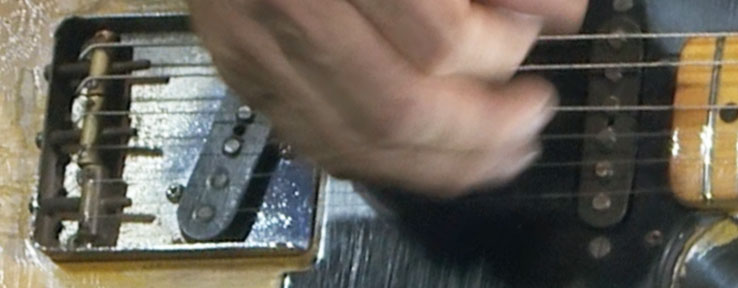
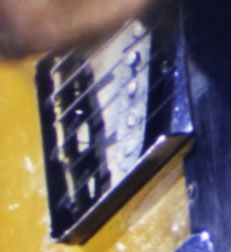
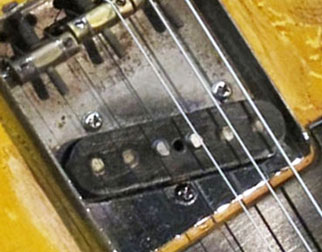
Workmate bridge pickup with raised D and G poles
Telecaster bodies were made with two-pickup cavities. After 1951, all Esquires used the same body as Telecasters. There was only one bridge pickup hole in the scratch plate, but all you had to do was get a two-hole scratch plate to install the second pickup. The Workmate already had a neck pickup installed when David acquired it, which was a common modification to Esquires. Seymour replaced that original neck pickup with a pickup taken from a Fender Duo-Sonic that he rewound.
An Esquire is a Fender Telecaster with only one pickup, and when they made the body they just route them out the same. So when you buy an Esquire, you don’t realize that the hole for this pickup (neck) is already underneath there. It’s all routed out the same, but they just don’t put a pickup there. Someone at some point had put a pickup on there and turned it into a Telecaster. The only modification I have done is to change that one to a different pickup...actually a Strat pickup. - David Gilmour, Youtube 2024
David later replaced that pickup with a Strat neck pickup. It is not known what Strat this pickup came from. All we know is that it sounds like a bright Tele neck pickup. The pickup hole in the pickguard was widened to fit the larger Strat pickup size, and two pickup screw holes were added. It is not known exactly when David installed it, but I surmise it was probably soon after David acquired the guitar, considering Duo Sonic neck pickups have flat pole pieces. Photos and video going back to the 1980s show the poles on the Workmate have always been staggered like the current neck pickup.
Gilmour using the Workmate bridge and neck pickup
I Put A Spell on You - Workmate solo using neck pickup. David switches to the bridge half way through
Gilmour using the Workmate bridge pickup - Fay Old Sun solo live March, 2016
Gilmour using the Workmate bridge pickup - Today solo live June, 2016
Gilmour using the Workmate bridge pickup - Rattle That Lock extended outro guitar solo
David has only used the neck pickup live a few times that I know of - Part of the Don't solo (Scotty Moore's Elvis tribute DVD) through his Bassman, and Paul McCartney's Run Devil Run album and both the 1999 Cavern Club and PETA concerts with McCartney (on DVD), through a Bassman and Hiwatt. David used it for several solos on the album. He also used it for a 2001 performance of I Put A Spell on You with Mica Paris and Jools Holland.
David played a 1959 Custom Telecaster in 1977 with a regular Telecaster pickup in the neck position, but the metal pickup cover had been removed. Removing the cover makes more responsive to the strings and sound brighter, more like a Stratocaster neck pickup. The desire to sound more strat-like may explain why David wanted a Strat neck pickup in the Workmate.
WIRING - The Workmate obviously does not have the single pickup Esquire wiring, since it has two pickups. It is not known which of the two fender Telecaster wiring configuration was used, but the neck position does not have the pre-set bass sound, so it appears to have the standard wiring configuration Fender adopted in 1967, not the 1950s wiring.
In 1952 Fender changed the original Esquire wiring to the 'tone control' configuration. The neck pickup position tone circuit had a pre-set bass sound with nearly all the treble rolled off. The middle position was the neck with the tone control, and bridge position was the bridge pickup with tone control. That changed in 1967 when the standard wiring configuration was adopted that is still used today. The pre-set bass on the neck pickup was removed, the tone control was wired in all three positions, and the middle position combined both pickups.
The 1950s neck and head stock of the Workmatewith round string retainer and silver "spaghetti" Fender decal used from 1955-1961
The shiny clear coating on the Workmate neck appears to have been applied after the neck was well worn
NECK - 21 fret maple. The round string retainer and position of the Fender decal date the neck to 1955 or earlier, so it's right in that transition period from U shaped necks to V shape. The neck radius appears to be the common 7.25". The neck is well worn and appears to have a shiny clear coating over it, which seems to have been applied after most of the neck wear occurred.
Fender started with mostly round or U shaped necks, then transitioned to mostly V shape necks from late 1954 -1958. The Fender logo decal on the Workmate headstock is the silver "spaghetti" style, used on Esquire headstocks from 1955-1961. The string retainer is the round type, used until late 1955. By 1956 Fender changed to the butterfly type.
BRIDGE PLATE AND SADDLES - The bridge plate on the Workmate body is from 1963 or later. 1950s Esquire and Telecaster bridges had an angled Fender stamp, then changed to a straight Fender stamp in 1963. The Workmate has a Straight Fender stamp. Fender went back to the angled stamp in 1983. Fender used brass saddles until late 1954 when they changed to steel saddles. The Workmate has brass saddles, so those may be replacements, but I have also seen other 1960s Esquires and Teles with brass saddles, so it was not uncommon.
(left, middle) The Workmate Esquire bridge with straight Fender stamp, dating it to 1963 or later.
(right) 1955 Esquire bridge with angled stamp.PICKGUARD - The Workmate has an 8-hole, single-ply, black pickguard with a beveled edge, indicating it is from the mid 1970s. Early 1950s Esquires and Telecasters had a 5-hole, single layer black pickguards made of fiber-filled Bakelite, about .060" thick. These were known as "blackguard" Teles and Esquires. The guards were often coated with clear Nitrocellulos lacquer. Fender changed the standard Telecaster pickguard color to white in mid 1954 and changed the material to ABS plastic, .060" thick. Even though white was the Tele standard, Fender still used black pickguards on the Esquire, presumably to use up the old stock, so those were still seen as late as 1956.
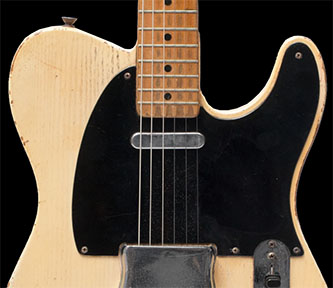
(left) The 5-hole pickguard used by Fender until 1959 and (right) a 1960 8-hole pickguard
Between 1959 and 1960 the material changed to celluloid (cellulose nitrate), about .080" thick. The 5-holes changed to 8-holes to avoid warping issues, and the edges became beveled. Although single-ply was still used, stronger 3-ply pickguards (white-black-white) became the norm on Strats and Teles. The material changed to vinyl or ABS around 1965. Around 1969 Fender began using black pick guards again with the introduction of the solid rosewood Telecasters and Stratocasters, but those were almost always 3-ply, black-white-black. Fender does not seem to have started using the 8-hole, 1-ply black pickguards with the beveled edges until around 1974-75, which is around the time David acquired the Workmate.
The Workmate 8-hole pickguard with beveled edges. The change to 8-holes came in 1959,
but the single ply pickguards with beveled edges were not used until the 1970sBODY AND BURST - Fender did not start making three-color sunburst finishes until 1958, so the Workmate body is definitely not from 1955. The body appears to have a mid 1960s to 1970s CBS era three-color "target" burst finish, not one of the rare two-color sunbursts of the 1954-57 period. Standard production model Telecasters and Esquires had blonde colored bodies in the 1950s. Sunburst only officially became a custom color option in 1959, but there were a tiny number of custom two-color bursts made earlier than that. Those bursts are very rare and typically had a transparent yellow-amber coating that allowed the ash wood grain to show through, not the bright opaque yellow, or the red, seen on the Workmate. The dark edge color was typically sprayed wide and smooth, but by the mid 1960s the spray width became thinner and closer to the edge of the body, like the Workmate.
Fender first began applying sunburst finishes to Strats in 1954, but only a few Esquires and Teles were made with that custom finish in 1955-1957. The burst consisted of two-colors - a transparent yellow-amber color called called 'canary yellow' that coated the whole body, and a brown-black color called 'dark salem' that was sprayed on the outer edge. In 1958 a red color was added in between the black and amber, creating the three-color burst, which was offically was added as a custom option in '59 for a 5% cost increase.
The red paint was not very UV resistant on the 1959-61 bursts and often began to fade after a few years, making what was once a 3-color burst look like a 2-color burst. A more fade resistant paint was used afer that, but it still fades over time, especially when exposed to sunlight. The red on the Workmate is probably the fade resistant type, but photos from the 1980s compared to 2016 do show the red has faded slightly.
In 1974 Gilmour used a 1959 Custom Tele with Pink Floyd that had a 3-color burst finish with the red color still showing. In some photos it almost looks like a cherry burst, as there is more red than black on the edge spray.
Gilmour playing his 1959 Custom Telecaster with sunburst finish and gibson PAF neck humbucker pickup in 1974
Gilmour playing the same 1959 Custom Telecaster in 1977 with a regular Telecaster pickup installed in place of the humbucker.
Note that the neck pickup cover has been removed, which makes it sound more like a Stratocaster neck pickup.The wide variety of Fender Sunburst finishes has always fascinated me. I like sunburst so much that I use it on my fantasy sword wood wall plaques, and for the plaques I design for the Lord of the Rings weapons and armor line that I have supervised for United Cutlery since 2000.
Sunburst finish was created to simulate the aged wood finish look of German instruments like violins, and was around long before Fender used them on solid-body guitars. The center of a 1950s Fender burst was usually transparent to show the wood grain pattern, but in the mid 1960s the paint was changed to opaque to hide the more unattractive wood grain. There are many burst styles identified from the 1950s, and definitions vary -
•Vintage Sunburst (amber yellow center, black edges)
•Cherry Sunburst (orange center, cherry red edges)
•Tobacco Sunburst (amber yellow or orange center, dark brown edges)
•Three-Color Sunburst (amber yellow center, then red, then black edges)1954-1956 sunbursts were done in a series of steps. The Ash wood was dipped or sprayed with a thin, clear wood sealer. Ash bodies then required a pore filler to be applied and buffed to make the surface smooth before painting. Amber yellow was was then sprayed on the Ash body (not stained). Then the outer edge burst color was applied, and a final thin, clear nitrocellulose lacquer was applied over the whole body as a final step. The outer color was typically sprayed wide, with smooth transitions from one color to the other.
The guitar features a maple D-shaped neck with the familiar silver “spaghetti” peghead logo with black trim and an ash body with a three colour sunburst. The finish is rare as Fender only made a very small batch of these in 1955 and didn’t really “officially” introduce the finish until 1959. - Phil Taylor
Fender switched from Ash to Alder as their primary wood in mid 1956, except for blonde bodies, which were always Ash. Alder could be stained amber yellow before applying the wood sealer, but the color looked slightly darker than the Ash bodies. Both woods typically showed the wood grain through the yellow. Below are photos of various types of Fender sunburst looks.
Vintage Telecaster and Esquires showing the range of burst looks (L to R) 1957 vintage burst, 1959 tobacco burst, 1966 tobacco burst
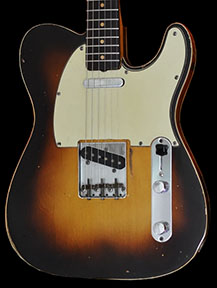
Two vintage 1960 tobacco burst Telecasters - these were likely three-color bursts, but the red has faded
(left) Gilmours 1959 Telecaster with transparent burst and smooth, wide color transition
(middle) 1959 Telecaster with transparent tobacco burst and smooth, wide red-to-black transition
(right) 1969 Tele with transparent 3-color burst and thinner transition
1966 Tele with opaque yellow "target" burst. Black and red spray was not as wide as most 1950s bursts
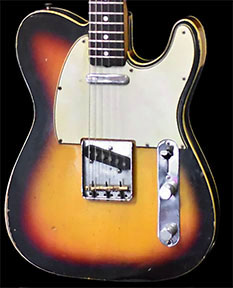
Vintage 1963 and three 1966 Telecasters with opaque yellow "target" bursts
In 1963 Fender began coating the bodies in polyester, then painted Nitrocellulose lacquer over that. The transparent amber was changed to opaque bright yellow paint that covered up most of the wood grain, presumably to hide the less appealing alder wood grain pattern, or lack of a grain pattern. Typically, the width of the black and red spray on these three-color bursts was not as wide or smoothly sprayed as the '50s bursts. It looked more like a target, hence the nickname "target" burst. I have even heard it referred to as a clown burst. The red color on these bursts did not fade as quickly and appeared brighter because it was sprayed over the opaque yellow instead of transparent amber.
I think CBS was just trying to save some $$$, but may guitarists did not like that look. Fender eventually went back to the classic transparent amber look in the 1970s. The body damage on the Workmate may have been a previous owner's failed attemp at removing the target burst for a refinish.
(L to R) David's Fender Esquire Tele showing the opaque yellow paint from 2013, 2018, and 2016.
The red color appears to have faded over time.
Closeup of the workmate body showing the opaque yellow layer under the red and black sprayed edge
As you can see above, the Workmate body looks like it is one of those mid 1960s to 1970s CBS era Telecasters target bursts. It appears to be coated in bright opaque yellow, not amber, and the red and black spray width is not as wide as most 1950s bursts. Looking at the grain and the bare wood color where it is completely worn off the top curve of the body, I think this is alder wood, not ash. In some places where the red and black spray is worn through I can see some of the opaque yellow paint still showing.
When I’m in the studio room, the Workmate is the one that I will often pick up or a Black Strat [replica] - David Gilmour from Rolling Stone Jan 2019
SWITCH TIP - The Workmate originally had a white Stratocaster switch tip. It was changed to a round 1950s barrel-style black switch tip sometime around 1999. Fender used black barrel shaped switch tips on Esquires and Teles from 1950-54, then they changed to a rectangular "top hat" shaped tip.
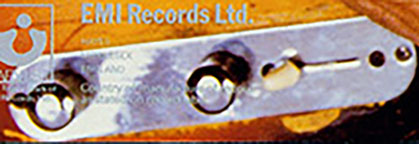
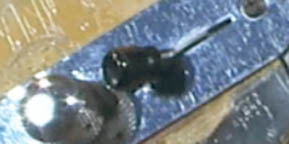
The original white Stratocaster pickup selector switch and the 1950s style barrel switch that replaced it around 1999
CONTROL KNOBS - Fender's Esquire/Telecaster knobs changed constantly throughout 1950s and 1960s. Fender started with dome topped knobs, then began using flatter topped topped knobs in 1954. The knobs on David's Workmate have a dome shaped top with a slightly flat area and fine knurling on the sides, identical to some of the knobs made from 1954-1959. It is rare to find dome top knobs past 1959, so I think these were not the original knobs.
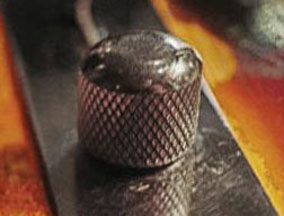

Photos of the Workmate knobs. The knobs are dome top style with fine knurling
Tele/Esquire knobs were usually brass with a chrome plating, but other brass or bronze platings were also used. The were made to fit over round, smooth pot shafts, so the knobs were fitted with a 6-32 set screw to tighten against the shafts to hold the knobs in place. There were 5 or 6 different versions of the dome topped knobs used in the 1950s. The dome shape, knob height, knurl count and shape, and set screw placement all varied. In general, the knobs had round dome-shaped tops that became flatter throughout the 1950s, and became very flat in the 1960s. The diamond shaped knurling varied from fine and flat, to large and roughly shaped diamonds.
The wide variety of Fender Tele/Esquire knob shapes and knurling styles from 1952-1959
There are many Tele/P Bass replacement knobs that are similar to the Workmate knobs available from Fender and other sources. The Fender Road Worn Tele Dome knobs look similar. The Fender Vintage '52 Tele Chrome Knobs also look similar.
SERIAL NUMBER - Another point which could help date this guitar is the serial number, but the workmate actually does not have one! In the beginning of 1954 Fender began serial numbering on the metal neck plate bolted to the body for all models in that year. Prior to that the number was stamped on the bridge plate. In 1976 Fender moved the serial number to the back of the head stock. There is no serial number on the Workmate neck, which is correct for the 1950s, but there is also no serial number on the neck plate, which is another indication that this is a parts caster.
Gilmour with the Workmate in 2015 for the Rattle That Lock rehearsals and in Pompeii 2016
Gilmour playing the Workmate in Pompeii 2016
We will probably never know the true lineage of this guitar, but it is one of the most interesting Esquire-Teles in Rock and Roll. Gilmour last used it for his 2015-16 Rattle That Lock tour. He auctioned off most of his massive guitar collection for charity in 2019, including his serial #0001 Strat and the Black Strat, but he kept the Workmate. In a Facebook Q&A from Sept 2018 David was asked what it is about this guitar that led him to keep it over those guitars? He said "I’m just too fond of the Workmate".
I’m keeping a lovely old Gibson steel guitar that has a really beefy sound. I’m holding onto a black Gretsch Duo Jet that I really love, along with a 1945 Martin D-18. I also couldn’t bear to part with my ’55 Fender Esquire that I nicknamed “The Workmate.” It’s the one you see on the cover of my About Face album, and it was used on “Run Like Hell” from The Wall, among other things.
- David Gilmour - Guitar World, May 2019
__________________________________________________________
Kit’s Secret Guitar, Gear, and Music Page
Guitar stuff, gear stuff, soundclips, videos, Gilmour/Pink Floyd stuff, photos and other goodies.
Copyright Kit Rae.
VISIT MY SWORDS, KNIVES and FANTASY ART WEBSITE www.kitrae.net


